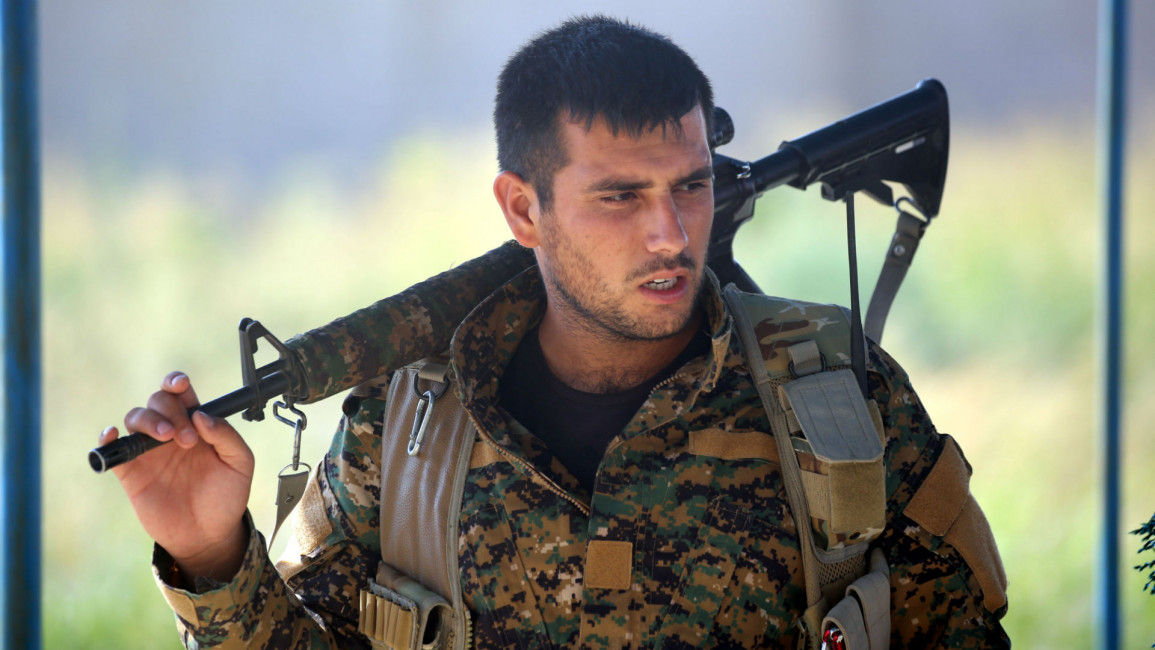SDF fighters linkup from east, west in Raqqa assault
US-backed Syrian fighters advancing on Islamic State militants from the eastern and western parts of Raqqa have linked up for the first time since launching their offensive on the militant group’s de facto capital, officials said on Friday.
Though the development marked a significant milestone in the battle for the IS stronghold, a US military spokesman cautioned that there is still tough fighting ahead before Raqqa is completely taken back.
The Kurdish-led Syrian Democratic Forces, under the cover of US-backed coalition airstrikes, launched a wide offensive to capture the city on June 6 and have managed so far to take about half the city.
The linkup of the eastern and western fronts deprives IS from access to the Euphrates River – and leaves the remaining militants in Raqqa and thousands of civilians surrounded.
US Army Col. Ryan Dillon said there still remains tough fighting ahead and that although the linkup of the Syrian opposition fighters’ east and west axis on the southern edge of Raqqa was significant, this does not in fact cut the city in two.
Dillon told the Associated Press in an email that the significance is that the SDF, despite IS’s best efforts, have successfully battled across the entire city from both sides and have joined forces. The US spokesman said this shows the steady progress the SDF fighters are making against IS.
“The fighting is ongoing from room to room and from house to house,” said Mustafa Bali, head of the SDF media center. Bali also confirmed that SDF fighters pushing from opposite sides have met up.
Bali said by telephone from northern Syria that the key difficulty facing advancing SDF fighters is to avoid striking civilians used by IS as human shields.
The top US envoy for the international coalition against IS, Brett McGurk, tweeted about the linkup of the two fronts, describing it as a “milestone” that is tightening the noose around IS.
 |
Turkey introduced new regulations at a border crossing with northwestern Syria, allowing only the transport of humanitarian aid |  |
Turkey tightens the noose
Also Friday, neighbouring Turkey introduced new regulations at a border crossing with northwestern Syria, allowing only the transport of humanitarian aid, after an Al-Qaeda-linked group took control of the Syrian post. President Recep Tayyip Erdogan said after Friday prayers in Istanbul that the Cilvegozu crossing in southern Turkey would remain open for food, medicine and some supplies to go across.
Turkey’s Cilvegozu stands across from the Bab al-Hawa in Syria’s Idlib province. The Al-Qaeda-linked militant group Hay’at Tahrir al-Sham captured the crossing after battles with the ultraconservative Syrian rebel Ahrar al-Sham group last month.
Erdogan said Turkey “cannot allow the passage of weapons,” suggesting humanitarian aid has “practically turned into an armament process.”
Turkey’s official Anadolu news agency reported a 3-kilometer tailback at the Oncupinar border crossing, located further east, after trucks were rerouted from Cilvegozu.
Meanwhile, the UN migration agency said Friday that over 600,000 displaced Syrians have returned to their homes this year, citing an increasing trend of returns while warning the situation remains “not sustainable.”
International Organization for Migration spokeswoman Olivia Headon said the 602,759 returns between January and July was on track to surpass the figure of 685,000 returns for all of 2016. But she also cautioned about the huge number of displaced Syrians this year – nearly 809,000.
IOM said that its partner agencies have found that two-thirds of the returnees have gone to the northern Aleppo governorate, where government forces ousted rebels from the city of Aleppo last year.
A third of the returnees said they went back to “protect their assets” while one-quarter cited “improved economic conditions,” IOM said.



